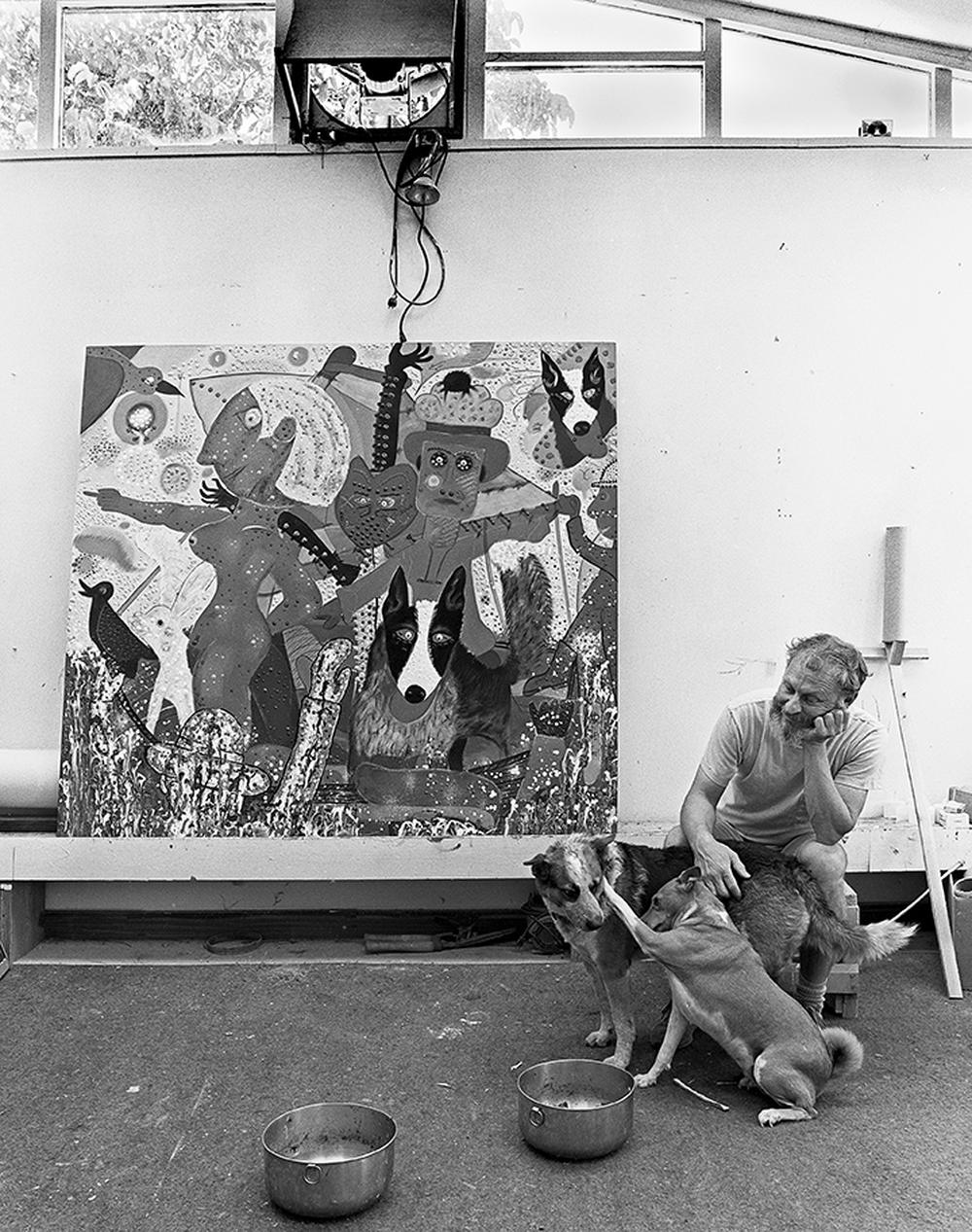Roy De Forest. Acrobats and Farmworkers
Roy De Forest was born in 1930 on a tenant farm on the prairies of North Platte, Nebraska, at the start of the Great Depression and the droughts that would lead to the Dust Bowl. When he was four, his family packed what belongings they could into a Model T pickup truck to begin a new life as migrant farmworkers. Working their way across the country, the family picked cantaloupe in Colorado and dug potatoes in Iowa. De Forest’s sister would later characterize the cross-country journey as an odyssey—an epic adventure starring their eccentric and heroic mother Oma De Forest, who was a source of superhuman strength to her children,1 and tales of their French grandfather, a vaudeville acrobat from New York who had traveled the country performing magical feats of balance and flexibility. In 1937 they finally settled in Yakima Valley, Washington, and eventually bought a small farm with fruit orchards and a barn for their pigs, chickens, and dogs. The animals of the artist’s childhood would later wander the fantastical worlds of his paintings. De Forest’s mother encouraged his art making from a young age, but when he enrolled at Yakima Valley Junior College in 1948 he majored in engineering at his father’s request and made art on the side. When he graduated in 1950, De Forest was offered a full ride to the California School of Fine Arts (now San Francisco Art Institute) and moved into San Francisco’s thriving art scene.
Susan Landauer, Of Dogs and Other People: The Art of Roy De Forest (Oakland: Oakland Museum of California, 2017), 22. ↩︎
